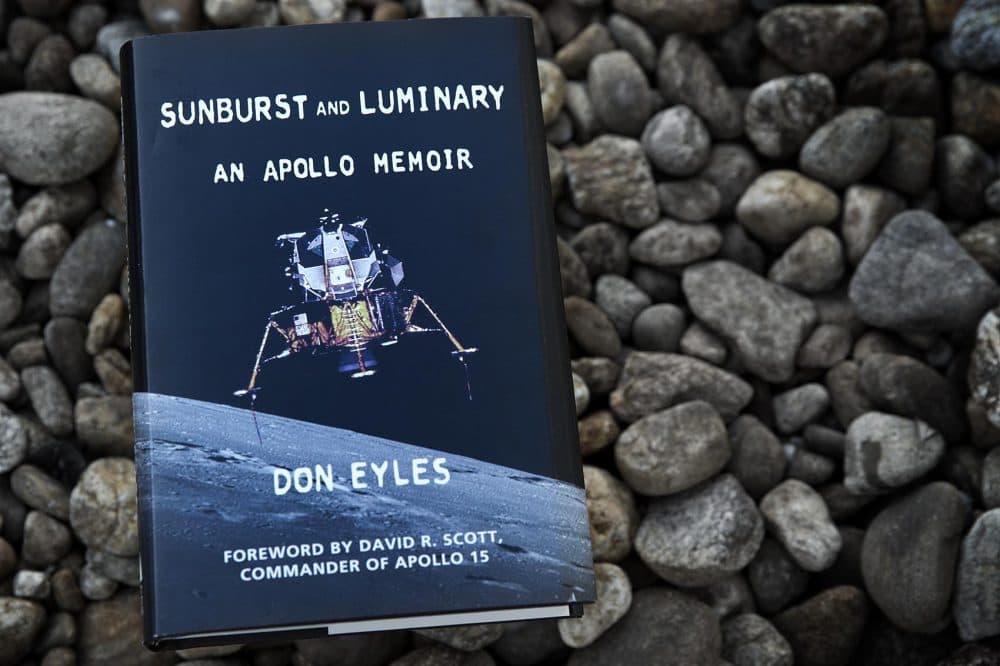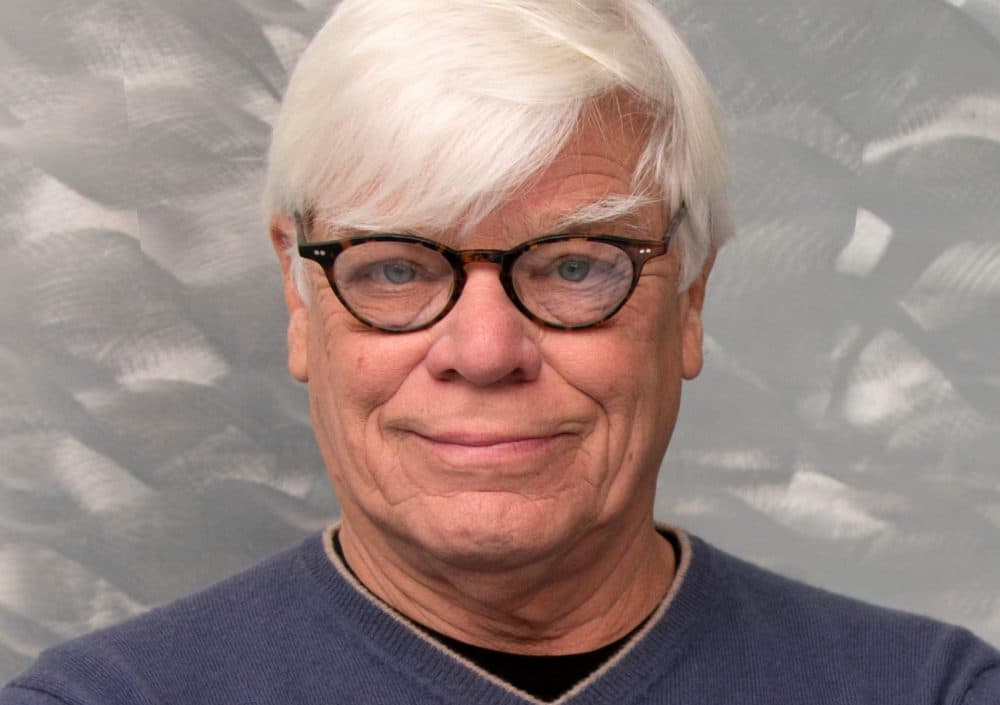Advertisement
Review
In 'Sunburst And Luminary,' Don Eyles Captures A Tech World That Predated Silicon Valley

In his Author’s Note for “Sunburst and Luminary: An Apollo Memoir,” Don Eyles offers an intriguing opener: “This book began in the mid-1980s as a sixty-page outline.” That level of thoroughness might signify an engagingly in-depth history, or might presage an exhausting tome. Fortunately, it’s the former: Eyles is a natural storyteller, and he’s got quite a story to tell.
“Sunburst and Luminary” (the names of two lunar flight computer programs) chronicles Eyles’ work as a computer engineer for multiple NASA space missions, notably Apollo 11, the first manned moon landing in 1969; Apollo 12, the first precise (“pinpoint”) moon landing, also in 1969; and Apollo 14, in 1971. Eyles helped to save the Apollo 14 mission by doing a software fix for the lunar module, in real time.
What distinguishes Eyles’ memoir is that it goes richly beyond an account of early space technology triumphs and pitfalls (though that alone would be worth reading). Eyles has created an absorbing history of a unique workplace, at a key cultural and technical moment: the MIT Instrumentation Lab in Cambridge in the late 1960s and early 1970s. In what would become one of its most famous accomplishments, the lab was working on a government grant for a massive, trailblazing project: “to build the primary guidance and navigation system for going to the Moon.”
The project leaders carried storied names from the world of science. First and foremost was Charles Stark “Doc” Draper, known throughout the world as “the father of inertial navigation” (whose name now graces the Charles Stark Draper Laboratory in Cambridge). Project leads on the Apollo guidance computer design included luminaries like Hal Laning (who in 1952 had invented the first compiler) and George Cherry (author of numerous computer programming books).
From a young age, Don Eyles had liked to design and build things; he would later major in math at Boston University. But he also had a deep connection to the arts. In high school in the late 1950s he worked as a tech in theater productions, belonged to a “great books” book club, and listened to Metropolitan Opera broadcasts. At Boston University, one of his most memorable courses was “a medieval art class that had me designing Gothic facades for a while.” This varied background would serve him well in his professional life, teaching him how to view a problem from different angles to solve it.
In 1966 Eyles was a recent college grad renting an apartment in Boston’s “threadbare Fenway neighborhood.” He didn’t have specific career goals. Although he’d never written any computer code, he thought he might like to program computers, because he “liked puzzles.” One sweltering day in June, walking back to his apartment after another “dispiriting interview in the business world,” he happened upon the MIT Instrumentation Laboratory, near the banks of the Charles River. On a whim he strolled in and, after a short chat with the receptionist, filled out an application. As soon as Eyles finished, she asked him if he had time to talk with the personnel officer, right then. Eyles’ timing could not have been better. That summer, “major parts” of the moon guidance and navigation project “still had to be done.” He was hired.
Eyles vividly portrays the Lab’s vibrant corporate culture, as well as the cultural and political eruptions of that era. Here were people who loved their work and knew how consequential it was. He remembers there “was no such thing as overtime. The building was always open.”
“Sunburst and Luminary” reads as both very much of its time -- Eyles possesses a finely-tuned eye and ear for evocative details -- and also quite contemporary. The MIT engineers may have worked with IBM punch cards and room-size computers, but you can feel the innovative roots of Silicon Valley companies a decade or two into the future, pushing through the layers of a 1960s office space.
The project teams had to conquer the space flight challenges of “speed, weight, and power consumption.” For Eyles and the other engineers, “Saving memory and time, and trading them off against each other, became our obsession.”
Eyles was hired to work on the lunar landing, “the most complex phase of the Apollo mission, and also the most dangerous.” Landing on the moon posed a particularly knotty set of problems: the moon’s “lumpy” gravitational field, a descent through thick clouds of kicked-up lunar dust, setting down on unknown terrain. As Eyles notes: “Boulders the size of cars were said to be too small to show up in photographs taken from orbit.”
No surprise, to convey the authentic background of each mission, “Sunburst and Luminary” is dense with info about guidance systems, radar, navigation and the inner workings of rocket hardware and software. Early sections are slow sledding through a thicket of acronyms. But Eyles logically builds one description upon another, and the technical concepts soon cohere into a narrative that cruises at a comfortable pace. His straightforward, candid style draws you in, whether it’s describing the alarm system on the lunar module or how Neil Armstrong was chosen to be first to walk on the moon instead of Buzz Aldrin. You are right there as Eyles advances through his 20s, gaining experience and confidence, often working directly with the astronauts in flight simulations in Houston and at Cape Canaveral.
There was, of course, life outside of work, and Eyles offers a mini-time capsule of venues and performers from a Boston and Cambridge that no longer exists: Led Zeppelin performing at The Boston Tea Party club on their first American tour, Erich Leinsdorf conducting the Boston Symphony, dinners at the No Name Restaurant on Boston’s Fish Pier.

Some things are universal, no matter the era. Consider Eyles’ complicated reaction to sudden and intense fame after his Apollo 14 save. He was written up in newspapers, fêted in Boston and featured in Rolling Stone ("Don Eyles: Extra! Weird-Looking Freak Saves Apollo 14!"). Afterward, Eyles mused that “It was as though a fuzzy parallel figure had come into existence who was based on me… but who inhabited another, separate dimension where he was not under my control.”
Perhaps it’s felicitous timing, as in that long-ago June day, that Eyles completed “Sunburst and Luminary” now instead of decades ago. There’s revived interest in space exploration, from the 2016 hit movie “Hidden Figures” to the real-life launch, this February, of the SpaceX Falcon Heavy spacecraft. And the humanities now shine as a valuable springboard for many professions. Back in 1966, some of the brightest people on the planet wanted to hire Eyles because he showed tenacity, curiosity and creativity — perfect talents for analytical thinking, no matter what type of degree you hold.